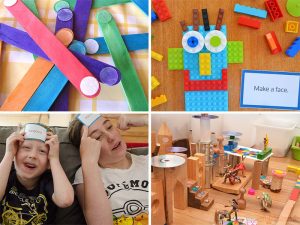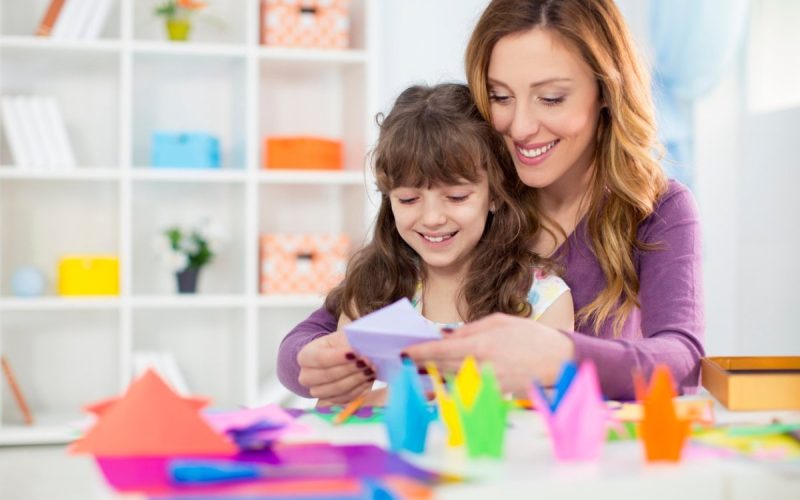Introduction
Finding the right activity that everyone enjoys can be a challenge. Whether you’re planning a family day out, a group gathering, or simply trying to beat boredom at home, activities that suit all ages bring people together. From toddlers to grandparents, shared adventures create lasting memories and strengthen bonds. In this article, we’ll explore a range of options—from outdoor fun to creative projects—that keep everyone engaged and smiling. You’ll learn how to choose and plan activities that spark joy, encourage learning, and promote health for participants of every age group.
Outdoor Adventures for All Ages
Outdoor activities offer fresh air, movement, and wide-open spaces. Parks and playgrounds are classic spots where young children can run freely while adults relax on benches or join in the fun. Consider organizing a nature scavenger hunt: prepare a simple list—find a smooth rock, a yellow flower, or a bird’s feather—and let teams explore together.
Hiking on easy trails works well too. Choose paths with gentle slopes and clear markings. Pack a picnic and let everyone taste the rewards of a short walk. For water lovers, try family-friendly kayaking or paddle boating at calm lakes. Many parks rent equipment and provide life jackets for all sizes.
Even backyard activities can shine: set up a cornhole game, a simple obstacle course, or lawn bowling with soft balls. By matching the challenge to each age, everyone stays safe and included. Outdoor adventures help burn energy, boost mood, and create shared stories that last.
Indoor Fun for Rainy Days

When the weather turns gray, indoor activities keep spirits bright. Board games are a reliable choice—select ones with simple rules for kids and strategy elements for teens and adults. Classics like Monopoly or Scrabble work if you adapt rules for younger players.
Arts and crafts transform any room into a creative hub. Lay out paper, markers, glue, and recycled materials. Younger children might paint or build with blocks, while older ones design custom greeting cards or small models. Adults can join in or guide projects, fostering teamwork.
Cooking or baking as a group is another hit. Choose easy recipes like homemade pizza or decorated sugar cookies. Each person takes on a role—mixing dough, adding toppings, or choosing shapes. This activity teaches practical skills and rewards everyone with a tasty treat.
Finally, set up a movie marathon with themes: nature documentaries, classic cartoons, or family-friendly adventures. Provide popcorn and cozy blankets to ensure a warm, shared experience. Indoor fun keeps everyone engaged, no matter the weather outside.
Creative and Educational Projects
Learning through play strengthens minds and builds confidence. One idea is a DIY science kit: simple experiments like vinegar-and-baking-soda volcanoes or growing crystals in jars spark curiosity. Provide clear instructions and supervise each step, letting older kids handle measurements and younger ones enjoy the fizzing reactions.
Storytelling circles encourage imagination. Use prompt cards—such as “A trip to outer space” or “A talking tree”—and let each person add a sentence to the tale. This activity adapts to all ages: littler children draw scenes, older kids write scripts, and adults moderate the flow.
Building with kits—like LEGO sets or wooden model packs—also suits mixed-age groups. Assign roles: adults assist with small pieces, teens follow advanced instructions, and younger kids sort and hand over parts. Completing a model together fosters pride and teamwork.
Educational apps on tablets or shared computers can complement hands-on projects. Choose titles that teach math, reading, or coding basics in playful ways. By blending creativity with learning, these projects appeal to a wide age range and add value beyond simple entertainment.
Physical Activities to Boost Health
Staying active supports both body and mind. Family yoga sessions introduce gentle stretches and breathing exercises. Use online videos tailored for beginners and emphasize fun poses like “tree” or “butterfly.” Everyone can follow along at their own pace.
Dance parties are another simple way to move together. Create a playlist with upbeat, familiar songs. Encourage freestyle dancing, follow-the-leader moves, or copy-the-step games. This activity raises heart rates and laughter levels at the same time.
For a team sport twist, try mini-Olympics in your yard or a local field. Set up relay races, long jumps, or bean bag toss events. Assign teams mixing ages so everyone contributes skills. Award simple medals or ribbons to celebrate participation.
Even basic exercises like jumping jacks, balance walks on a taped line, or sit-and-reach stretches work indoors or out. Regular physical activity builds strength, flexibility, and healthy habits across generations.
Relaxing and Social Activities
Not all fun needs to be high-energy. Book clubs for families or friend groups can spark meaningful discussions. Choose books or short stories at varying reading levels. During meet-ups, share favorite parts, draw scenes, or act out dialogues.
Gardening offers calm, hands-on work. Plant easy-care flowers, herbs, or vegetables in pots or small beds. Children love digging and watering, while adults guide planting techniques. Over weeks, everyone watches plants grow, learning patience and biology.
Puzzle tables with jigsaw puzzles cater to mixed age skills. Have pieces sorted by color or pattern so younger children find easy matches and older ones work on complex sections. Puzzles encourage focus and quiet teamwork.
Finally, host a themed photo session: pick costumes or props, set up simple backdrops with sheets, and let everyone pose. Capture silly moments and share prints or digital albums later. These relaxed social activities deepen connections without demanding too much energy.
Planning Tips for Successful Activities
- Know Your Group: Consider ages, interests, and abilities before choosing.
- Set Clear Instructions: Keep rules simple and demonstrate tasks visually.
- Provide Choices: Offer two or three activities so participants can pick what appeals most.
- Balance Active and Calm: Alternate high-energy and quiet moments to prevent fatigue.
- Gather Materials Ahead: Prepare supplies and backups for messy projects or weather changes.
- Celebrate Participation: Focus on fun and effort, not competition or perfection.
By planning thoughtfully, you ensure each activity runs smoothly and everyone feels included and valued.
Conclusion
Choosing the best activities tailored to all ages brings families and friends closer while creating fun, learning, and healthy habits. Outdoor adventures spark adventure, indoor projects boost creativity, and social or relaxing pursuits deepen bonds. By mixing physical movement with calm crafts and giving participants choices, you cater to diverse needs and keep everyone engaged. Thoughtful planning—knowing your group, setting clear rules, and balancing energy levels—ensures smooth, memorable experiences. Try these ideas today to craft shared moments that delight toddlers, teens, parents, and grandparents alike. Activities for all ages prove that play and connection truly have no limits.









